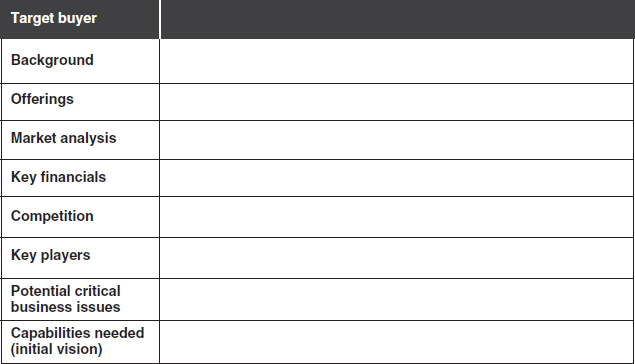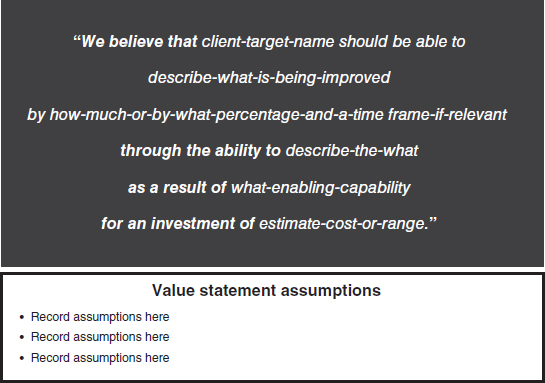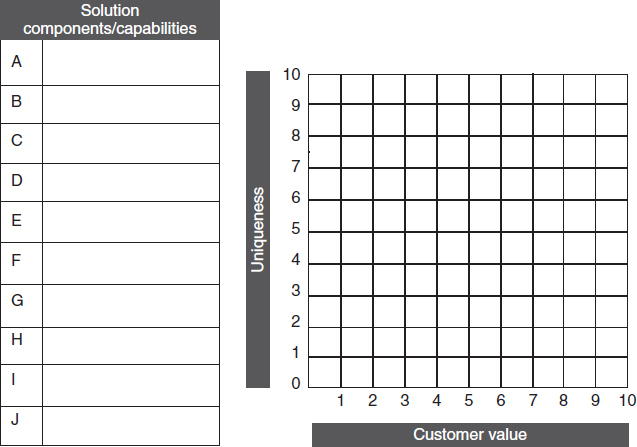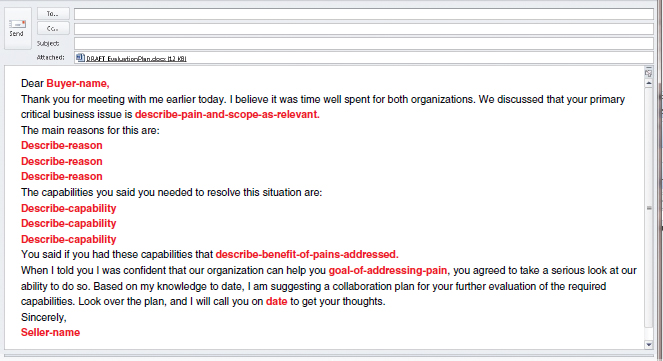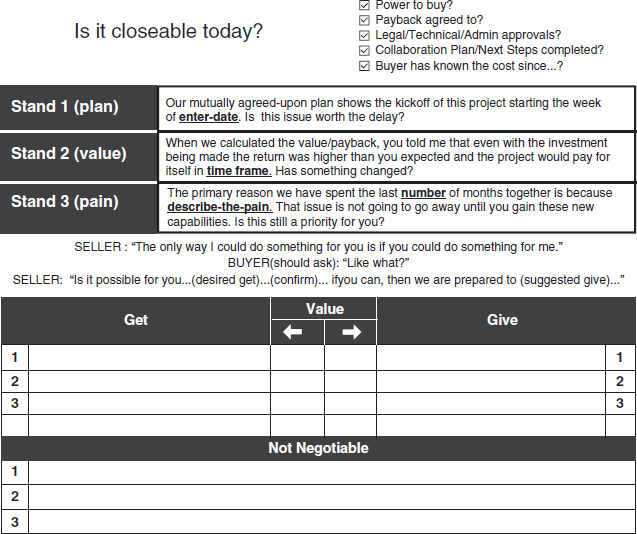APPENDIX
Essential Competencies for The Collaborative Sale
The three personae of The Collaborative Sale require sellers to possess or develop a number of key competencies—knowledge, skills, or abilities that enable them to perform the required behaviors for each persona. Managers implementing The Collaborative Sale should look for evidence of these competencies in any potential new hire, and examine what competencies need to be developed in existing sellers on staff.
Some of these competencies overlap, especially those required for situational fluency (see Chapter 3), which is the foundation of each of the three personae.
Sales Performance International (SPI) offers assessments that measure sellers’ levels of these competencies. For more information, go to www.spisales.com.
Micro-Marketer Competencies
In order to execute successfully the actions needed to fulfill the Micro-Marketer persona, a seller must possess the following essential characteristics, knowledge, skills, and abilities:
- Situational knowledge—understands the buyer's industry, job roles, areas of responsibility, and common business issues.
- Capability knowledge—understands product and service solutions, and how they address customer business issues or capitalize on potential opportunities.
- Demand creation—creates and uses business development messaging for generating demand, providing thought leadership, and stimulating buyer interest.
- Problem needs identification—identifies buyers’ business drivers for change within a targeted market, organization, prospect, or opportunity.
- Communication skills—has ability to express points of view clearly, both orally and in written form.
- Networking and relationship-building skills—is able to build productive social bonds with customers and buyers; builds, maintains, and leverages mutually beneficial business relationships.
- Social media utilization—uses social media tools to expand seller's knowledge and to interact with and influence buyers.
- Technical skills—is able to use appropriate technology to participate in social web and online customer conversations, as well as any supporting Micro-Marketer technologies, such as a marketing automation system.
- Planning and organizational skills—can use structured processes and methods to identify a logical sequence of events and activities required to achieve an intended goal or result.
Visualizer Competencies
In order to execute successfully the actions needed to fulfill the Visualizer persona, a seller must possess the following essential characteristics, knowledge, skills, and abilities:
- Situational knowledge—understands the buyer's industry, job roles, areas of responsibility, and common business issues.
- Capability knowledge—understands product and service solutions, and how they address customer business issues or capitalize on potential opportunities.
- Communication skills—has ability to express points of view clearly, both orally and in written form.
- Sales conversation skills—collaboratively diagnoses buyer problems or potential opportunities; creates, expands, or reengineers visions of solutions; develops mutual agreement with buyers on capabilities needed.
- Opportunity qualification—applies guiding standards to assess the correct buyer state, strength of buyer vision, and quality of a sales opportunity, and then make engagement and prioritization decisions.
- Competitive skills—evaluates competitive positions and executes appropriate strategies and tactics to win.
- Relationship-building skills—is able to build productive social bonds with customers and buyers; builds, maintains, and leverages mutually beneficial business relationships.
- Customer focus—keeps the customer foremost in mind; advocates for the customer's best interests.
Value Driver Competencies
In order to execute successfully the actions needed to fulfill the Value Driver persona, a seller must possess the following essential characteristics, knowledge, skills, and abilities:
- Situational knowledge—understands the buyer's industry, job roles, areas of responsibility, and common business issues.
- Capability knowledge—understands product and service solutions, and how they address customer business issues or capitalize on potential opportunities.
- Value identification and articulation—determines scope and impact of buyer problems or potential opportunities; identifies, quantifies, and communicates the tangible results of proposed solutions; can identify or create compelling reasons to act based on value.
- Financial acumen—understands buyers’ financial statements, key performance measures, and how their decisions will affect value creation.
- Risk management skills—can relate to and understand buyers’ risks at both the individual level and the organizational level; can take appropriate actions to mitigate buyer risks.
- Technical skills—is able to use appropriate technology to operate business impact and value analysis estimation tools, such as online collaborative value calculators and specialized Excel worksheets.
- Customer focus—keeps the customer foremost in mind; advocates for the customer's best interests; can anticipate potential solution transition and implementation issues for specific customers and recommend appropriate actions and resources to address those issues.
- Communication skills—has ability to express points of view clearly, both orally and in written form.
Additional Collaborative Selling Tools
The Collaborative Sale describes several tools and job aids to help sellers collaborate with Buyer 2.0 to progress to a buying decision. In addition to those tools described in earlier chapters, we show some additional tools that may be helpful here. Readers can find downloadable templates for these tools at www.thecollaborativesale.com or at www.spisales.com.
Results Story
A story that describes a situation similar to that of the buyer and expresses the results for solving the problem or capitalizing on an otherwise missed opportunity (e.g., the potential “pain” of the buyer) enables Buyer 2.0 to envision how they might realize the same kind of benefits. It is a very good tool for helping the Micro-Marketer persona to stimulate the curiosity of a targeted buyer. The story does not have to name a specific customer or reference; a general job title and industry are sufficient. The key is to share specific, quantitative results for addressing the buyer. Figure A.1 shows the format for a good results story.
Target Buyer Profile
When a seller identifies a potential buyer, the seller should develop the right level of situational fluency before trying to engage. This means understanding that buyer's organization, critical business issues or potential opportunities (possible pains), business drivers, and related factors (reasons for the pains), key players (who owns the pains), and a hypothesis of the capabilities that may help the buyer to address the issues or capitalize on an opportunity (a prospective vision of a solution). This tool can be used by a Micro-Marketer persona to help develop sufficient situational fluency to approach a target buyer, or by a Visualizer persona to help formulate an initial vision of a potential solution. Figure A.2 shows the format for a useful target buyer profile.
Assumed Value Estimate
An effective tool for stimulating interest with buyers is a value proposition or value estimate. This tool expresses an initial, assumed estimate of value for addressing a potential problem or opportunity. This tool is often used by the Value Driver persona early in the buying process to stimulate interest or later in the buying process if entering late. In documenting their assumptions, sellers should not obsess about being exceptionally precise with this tool—it is designed to stimulate interest or further a conversation with the buyer. Ultimately, the goal is to collaborate further with the buyer and reach mutual agreement on the real value. Figure A.3 shows the format for a good assumed value estimate.
Differentiation Grid
The Visualizer persona must be prepared to engage with the buyer in conversations that provide insight and value. To that end, sellers must understand what unique differentiators they can bring to help develop a compelling vision in collaboration with the buyer. The differentiation grid is a simple exercise that helps develop that understanding based on the uniqueness and value of potential solution capabilities for the buyer. By evaluating and charting each of these capabilities, the Visualizer can focus on those solution components that provide the most value and that also help to differentiate the vision from alternatives. Figure A.4 provides a template for the differentiation grid exercise.
Sales Conversation Prompter
The Visualizer persona engages in conversations with buyers to create, enhance, or reengineer visions of a potential solution. The collaborative sales conversation structure described in Chapter 5 provides a method for sellers to execute dialogues with buyers that encourage collaboration toward a mutually agreed vision of a solution. Soliciting the buyer perspective is relatively easy for sellers—they only have to ask open questions. Sellers should be prepared to share their own perspectives, so that they can ask insightful questions and demonstrate situational fluency. The sales conversation prompter tool enables the Visualizer persona to accomplish this. It can be used to prepare for vision creation, vision enhancement, or vision reengineering conversations. Figure A.5 shows a sales conversation prompter template.
Buyer Communication
After meeting with a buyer, whether virtually or in person, sellers should confirm their alignment by sending a communication, usually an e-mail message, to the buyer. The communication should confirm the problem or potential opportunity (“pain”), the reasons for the issue, the capabilities needed, the initial value or key benefits, and agreed-upon next steps. The intent of the communication is to generate a response from the buyer; the quality of that response is a verifiable outcome showing alignment and progress with the buyer. Figure A.6 shows a template for a suitable buyer communication.
Collaborative Negotiation Worksheet
Sellers must know how to negotiate effectively in order to secure business with Buyer 2.0. By the time an opportunity is at this stage, the seller should have used the Visualizer persona to develop a clear vision of a solution in collaboration with the buyer, and also used the Value Driver persona to establish a jointly agreed estimate of value for the solution. This information can be used to prepare for a suitable negotiation that is a win-win agreement for both the buyer and the seller. An effective negotiation should be a joint collaboration exercise, instead of a conflict. The collaborative negotiation worksheet, illustrated in Figure A.7, helps sellers to prepare for a collaborative negotiation session with the buyer.


